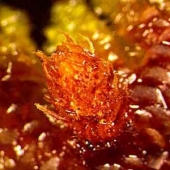Please select root levels for the menu
Thallose liverworts 2: Antheridia and archegonia on elevated stalks
In some thallose liverworts stalks grow out of the thallus and form disc-like or finger-like structures at their tips that contain sperm-containing antheridia and egg-containing archegonia. After fertilisation the embryos remain attached to the stalks. Each embryo forms a spore-forming structure (sporophyte) consisting of a seta (short stalk) and a terminal capsule. This results in the sporophyte hanging down from the undersurface of the discs.

Lunularia cruciata - The egg in each 'finger' has been fertilised and the resulting embryos have formed short stalks (setae) with terminal capsules. Found on damp silty or clay soil.
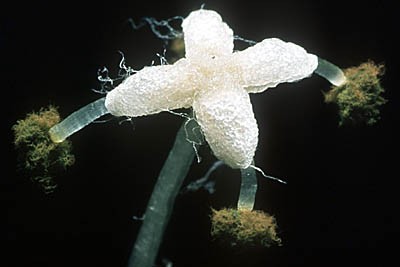
Lunularia cruciata - The short seta with its terminal capsule hangs downward. These capsules have already opened exposing a brown tuft consisting of filaments (elaters) and spores.
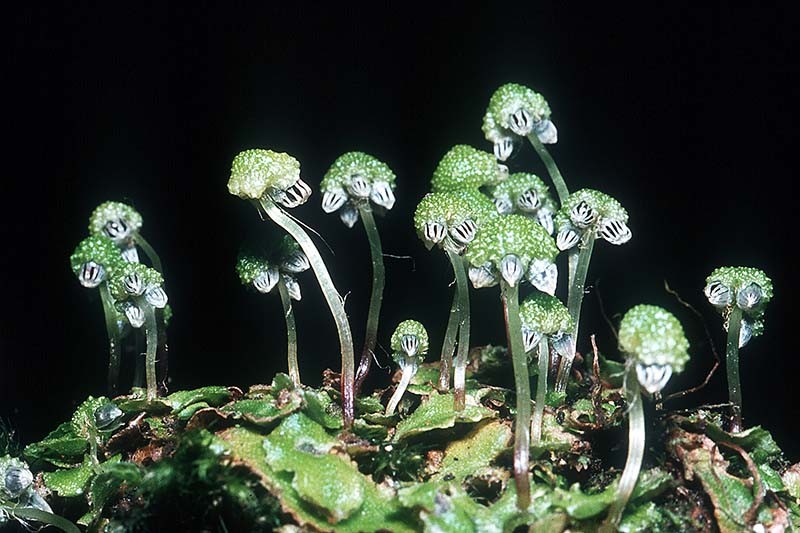
Asterella australis - In this liverwort, the thallus stalks are very delicate and each terminates in a lobed disc; found on soil and damp banks.
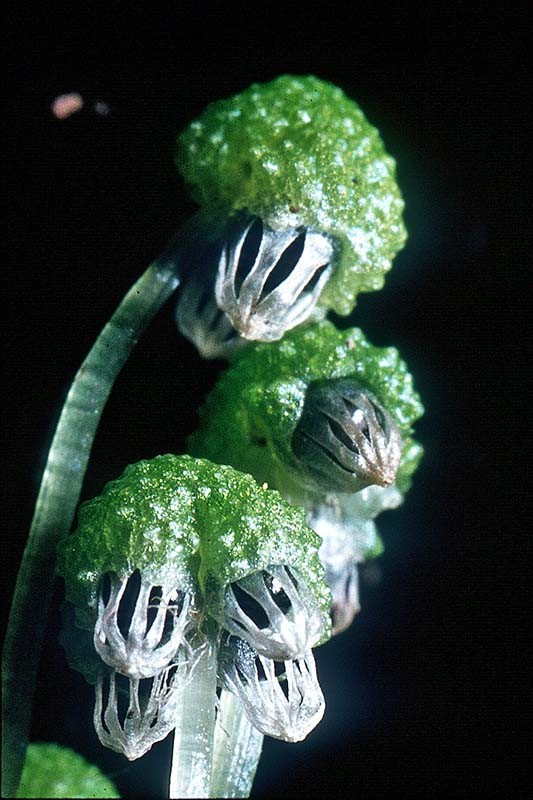
Asterella australis - A cup-shaped structure with long teeth around the rim surrounds each developing sporophyte.
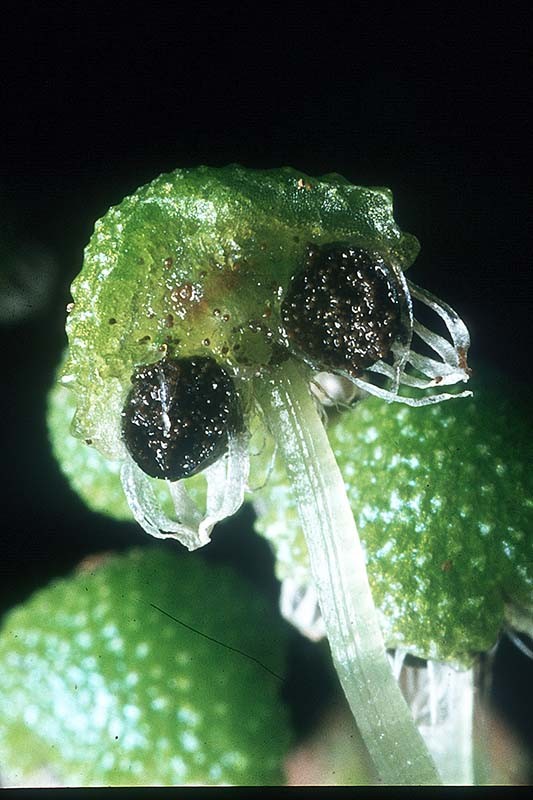
Asterella australis, part of the cupules removed - Each sporophyte forms a capsule (black) lacking a seta so that it is more or less immersed in base of the surrounding cupule.

